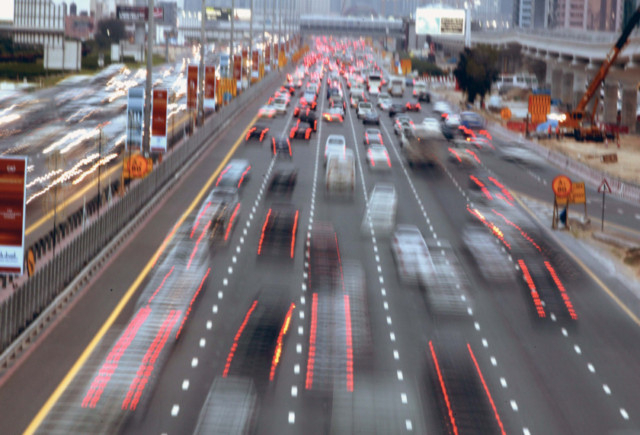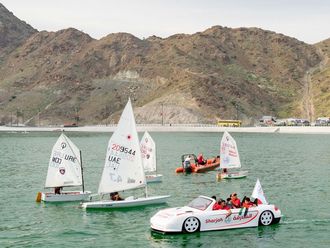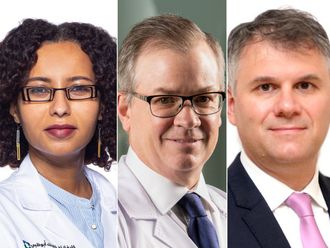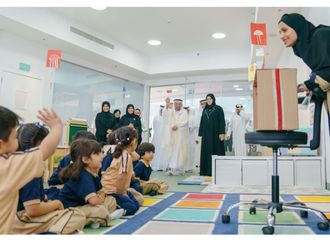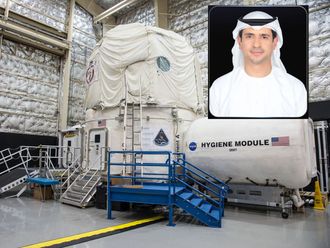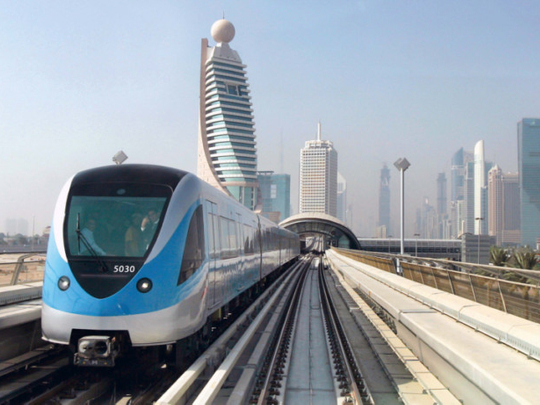
Dubai: As urban populations rapidly increase over the years, the ultimate battle for space and mobility — if left unchecked — could spell doom for the public and the economy.
Dubai can avoid this by adopting a two-pronged approach for its Mobility concerns: by sticking to its strategic plans of making public transportation accessible and also, by successfully convincing people to ditch their cars, an expert said.
“Dubai is one of the fastest growing cities in the world. In terms of quality of road infrastructure, Dubai stands at a top rank in the world. Even the public transportation arrangements are of world-class quality,” Dr Arun Bajracharya, Assistant Professor, Faculty Business, The British University in Dubai, told Gulf News.
“However, one of the main concerns in the context of road transportation in Dubai is the extent of availability and accessibility of public transportation for the large mass of public. Besides that, the excessive ridership of private cars is also a matter of concern,” he added.
Dr Bajracharya, who has done extensive research on transport systems in the UAE and the behaviour of commuters, said nine out of 10 motorised trips (or almost 90 per cent) made in Dubai use private cars, quoting a Roads and Transport Authority (RTA) study.
“Along with these, traffic congestion, high road accident rate, and transport pollution are also the other consequent transport-related challenges in Dubai,” Dr Bajracharya added.
Since 1950, the emirate’s population has grown 100 times from a small town population of 20,000. Dubai’s active population during daytime in 2012 was recorded at 3.08 million according to the Dubai Statistics Centre. Out of this, 2,053,600 are permanent Dubai residents while 1,033,165 people are just working in Dubai but residing in other areas, especially Sharjah.
By 2020, the number of permanent Dubai residents alone is projected to increase to 2.8 million based on a medium growth scenario according to the Dubai 2020 Urban Masterplan released by Dubai Municipality.
With increased population comes increased congestion in key city centres. As much as Dh10.5 billion or 3.5 per cent of the UAE’s GDP is lost to traffic congestion annually, Dr Salem Al Shafiei, a veteran transport planner, said in his 2009 study presented at the Sustainable Urban Transport seminar hosted by the International Association of Public Transport. This amount takes into account both passenger traffic on the streets as well as heavy goods traffic.
Like with any urban city, moving people and goods should be done efficiently. And with massive population sizes, the best way to do this is through mass transit. But though Dubai has spent more than Dh75 billion in transport infrastructure since 2006 based on 2012 figures from RTA, public transport seems to be the least favourite of many residents deeply rooted in a “car culture” society that is Dubai.
Private cars remain the transport of choice for various reasons including the unforgiving weather during summer and privacy issues among local women. The affluent perceive having cars as a status symbol.
“Private cars in general would be an obvious choice for transportation in modern urban life. Excessive use of private cars in comparison to public transportation would be there when: cars are easily affordable to own and use; road networks are pleasant to drive through, and public transportation stations are not available or they are less accessible,” Dr Bajracharya said.
In one of the studies conducted by RTA, car ridership is projected to increase from 5.1 million average day person trips in 2003 to 21.9 million trips in 2020. From just 650,000 cars registered in 2005 to 1.3 million in 2010, it is expected that the total registration would reach to 5.3 million in 2020.
“One relevant explanation could be, once people are habituated to private cars, then they would get caught into the desire of seeking more and more comfort in private transportation,” Dr Bajracharya said.
And another reason is basic: petrol is significantly subsidised and relatively cheap in the UAE.
Getting people to shift their preference of transportation could be a challenge, but RTA is doing whatever means possible. Every year, RTA conducts at least two car-free days annually where the public is enjoined to ride mass transit systems for free. Metro stations and bus shelters offer free Wi-fi to lure more users. Commuters are given real-time guides through the Journey Planner. They are offered efficient payment options using the universal Nol card that can access different services.
RTA also aims to increase the public transport share from 11 per cent in 2011 to 20 per cent by 2020, by investing Dh47 billion in the Dubai Metro, Tram Network, Bus Network and Marine Transport Network.
Plans to extend the Red and Green Lines of the Metro to densely populated areas like Jebel Ali and Mirdif for the Red Line and reaching up to the Academic City for the Green Line by 2020 are now in the pipeline.
Besides extending the metro, RTA should also look into increasing inter-city transport in areas closest to commuters, Dr Bajracharya said.
“The ideal or better option would be to develop ideas to provide public transportation services near to the doorsteps of large mass of people. Or in other words, if new developments are well integrated with dedicated metro network, public transportation would be a part of life for the residing public,” Dr Bajracharya said.
But above all this, the most important step is to ensure a shift in mindset among road users.
“If private transportation is made less attractive and if people are encouraged to use public transportation, things could be improved.”


